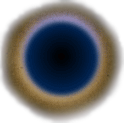Since the inception of video there have been numerous different video recording formats. A large number of these only existed in a laboratory and were never used commercially. John Logie Baird’s early experiments with the Phonovision in the 1920s, where he recorded television signals onto phonograph discs (normally used for audio recordings), was the first method of recording an electronic video signal. However the playback of these images was not very successful at the time.
In 1950, Mullin, Ampex and Wayne Johnson, a broadcast television electronics expert, started work on the idea of recording video signals to magnetic tape. Developments continued at Ampex, as well as other organisations like the BBC and RCA (Radio Corporation of America) throughout the first part of the 50s. Many prototypes were built around this In 1956, Ampex eventually produced the first successful quadruplex or transverse scan recorder using 2-inch tape. It was this technology that dominated the professional vied market for the next twenty years until the release of helical-scan recorders, which started to penetrate the market in the mid 70s. Helical-scan technology is still the exclusive format for recording to magnetic tape, including digital recording.
It was not long until artists started to experiment and create works with video and its technology. Those who could get hold of the expensive early video equipment, often artists like Andy Warhol who were already using film, started to explore the possibility of video. The size of the equipment at that time was prohibitive, and so generally confined the artist to the studio using fixed cameras.
In the 70s a number of artists who had previously used film started to move towards video. The first broadcast nationwide of an artist video in the UK was in 1974 on the BBC2 programme Second House with Peter Donebauer’s Entering (featuring sound by Simon Desorgher). Strangely, this was an outside broadcast from the video studios at the Royal College of Art due to the BBC studios not being set up in a way that would allow the kind of abstract work Donebauer was creating. According to commissioning BBC producer Mark Kidel in 1976, “he could not use (the) BBC equipment, because he bends the tools of the trade, extends their possibilities beyond the intentions inherent in their design. Whereas he had encountered few difficulties at his usual workplace, the Royal College of Art’s TV studio, a BBC studio was too inflexible with its specialist design and a layout ideal for the needs of conventional broadcasting.”
Ironically the Royal College of Art’s TV studio had been donated to them by Lew Grade from ATV in Birmingham. It was a redundant first generation colour studio that ATV had replaced.
During Monkhouse’s time at EMS he met the artist Peter Donebauer in 1974. This led to a collaboration that began with the design and build of the Videokalos image processor. The development of this did not create anything new, but it combined various features into one portable unit, whereas before they existed as bulky individual entities. The Videokalos was envisaged to process an input signal that would normally be from a video camera; it was not a synthesiser as such because it did not generate its own signals. It combined a video mixer, a keyer and wipe generator, a multiple colouriser, a gen-locked sync-pulse generator and encoding/decoding cards.
Donebauer used the Videokalos on many of his recorded works including Merging-Emerging, 1978 and Moving, 1980. But it was the portability of the unit that enhanced the possibilities of creating live work that gave the Videokalos the edge.
Donebauer and Monkhouse along with musician Simon Desorgher and others, including at various times Brian Hoey, Barry Guy, Roger Heaton, Lawrence Casserley and Michael Ormiston, formed VAMP in 1978. VAMP or Video and Music Performance was, and still is, an improvised and abstract visual and avant-garde music performance group where the musicians and the visuals influenced each other to create a live experience of work which had only previously been done solely on single screen, and so thus exposed the ‘workings’. Donebauer and Monkhouse would manipulate images from oscilloscopes and other such devices via vidicon tube cameras (see earlier in this chapter) using the Videokalos and other bespoke devices. These performances took place at, amongst others: Biddick Farm Arts Centre, 1978; the Institute of Contemporary Arts, London, 1980; Ikon Gallery, Birmingham, 1980 and more recently in Tate Britain, London as part of Analogue: Pioneering Video from the UK, Canada and Poland (1968–88) in 2006.
Others to use the Videokalos include the artist Chris Meigh-Andrews, who utilised it on a number of works including Horizontal and Vertical (1978) and The Distracted Driver (1980), Brian Hoey and the Duvet Brothers.
Edited extract from the chapter “A Brief History of Video – Time and Base” by Adam Lockhart in “Rewind: British Artists’ Video in the 1970s & 1980s” edited by Sean Cubitt and Steve Partridge, John Libbey Press, 2012
